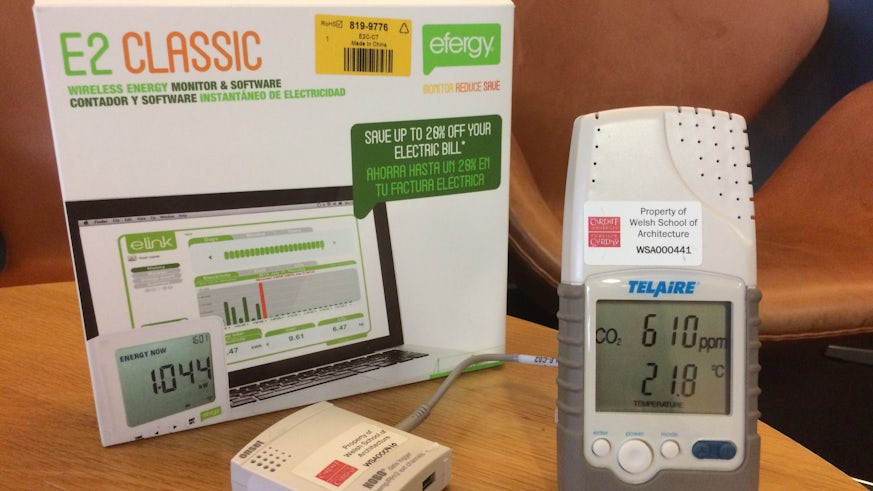Home monitoring kits for Merthyr
10 April 2017

The installation of a simple monitoring kit could help us to better manage temperature, humidity and electricity usage in our homes and ultimately lead more comfortable lives.
This is one of the main findings from a Cardiff University project that set out to provide residents of Merthyr Tydfil with a greater understanding of how their homes work and provide advice on simple measures that could be implemented to make their home more comfortable and energy efficient.
It is claimed that in many cases, the implementation of new technologies and sustainable approaches in households can actually increase electricity use as they are not designed to take people’s habits and technological skills into consideration.

The project team, from the Welsh School of Architecture, were at the Senedd on Wednesday (5 April 2017) to brief Assembly Members and various other stakeholders on the results of the project and their recommendations for housing associations.
Between August and December 2016, the research team analysed a total of nine homes in Merthyr Tydfil, teaming up with the Merthyr Tydfil Housing Association to provide simple monitoring equipment to help the residents visualise the conditions in their home.
Hygrometers, thermometer gauges and clip-on energy use monitors
The monitoring devices included data-logging equipment as well as visual devices, such as hygrometers, thermometer gauges and clip-on energy use monitors. These were installed in the residents’ kitchens, bathrooms, living/dining rooms and bedrooms.
Interviews with the residents were performed before and after these devices were installed.
The results revealed an initial lack of connection between residents and their indoor environments; however, after using the monitoring equipment the householders showed a better understanding of their indoor environment and were able to discern the air temperatures and relative humidity in different areas of their home.
The residents were also able to identify how some daily practices, such as cooking, taking a shower or opening windows, could modify their indoor environments. Some of the residents could also recognise the different devices in their homes that used the most energy.
Knowledge, technical skills and lifestyles
In addition to the implementation of low-cost technologies with a comprehensive monitoring plan, the researchers also recommend continuous training, such as workshops and seminars, to help residents better understand their homes.
They also recommend that interventions with technology need to take people’s knowledge, technical skills and lifestyles into account.
Lead author of the report Professor Chris Tweed, head of the Welsh School of Architecture, said: “Householders’ behaviour is often not considered when designing houses or providing interventions. Therefore, strategies to improve the indoor environment and save energy do not always achieve the predicted results...”

“Householders often don’t fully understand how to operate their homes most effectively, which can produce thermal discomfort, poor environmental conditions and lead to wasteful energy use practices.”
“Here we have shown that the implementation of basic low-cost technology to visualise household conditions, combined with clear and simple advice, can provide a significant change of behaviour in residents.”
Share this story
The distinctiveness of the School lies in its tradition of combining creativity with a focus on making, ìts research portfolio, the calibre of its staff and unique location.

